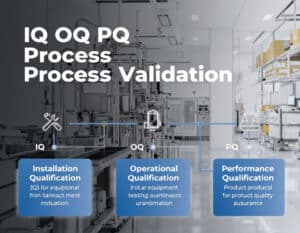The Most Complete Methodologies for Ideation, Project Mgt, Risk Mgt, Ergonomics, Product Design, Lean Manufacturing

Within the domain of product design, these 180+ professional methodologies offer the largest collection of articles and resources that delineate various methodologies and tools relevant to ideation, innovation, ergonomics, and manufacturing. This centralized repository permits to access and compare systematic approaches, such as Form, Fit and Function Analysis (FFF), modular design, A/B testing, and design thinking.
The tools listed aim to inform on techniques for creating new products or improving existing ones by detailing processes that can lead to enhanced usability, reduced production costs, and alignment with sustainable practices. They support various stages of product development, from initial concept generation and feature prioritization to ensuring quality and market relevance.
Note: global methodologies (ISO 9000, Total Quality Management, Design for Manufacturing, Lean Manufacturing, Six Sigma …) are not included in the comparison cards below, but have posts on this site and can be searched with the menu or with the magnifying glass on the top right.
Musculoskeletal Discomfort Questionnaires
- Continuous Improvement, Ergonomics, Human Factors, Human Factors Engineering (HFE), Process Improvement, Quality Assurance, Quality Control, Quality Management, Risk Management
Objective:
To assess the level of musculoskeletal discomfort experienced by workers.
How it’s used:
- A self-administered questionnaire that is used to collect data on the location, frequency, and severity of musculoskeletal discomfort experienced by workers. It is often used in ergonomics to identify high-risk jobs and to evaluate the effectiveness of interventions.
Pros
- Simple and inexpensive to administer; Can be used to collect data from a large number of workers.
Cons
- The results are subjective and can be influenced by individual factors; May not be as accurate as a physical assessment.
Categories:
- Ergonomics, Human Resources
Best for:
- Assessing the prevalence of musculoskeletal discomfort in a workforce to identify high-risk jobs and to evaluate the effectiveness of ergonomic interventions.
Multivariate Testing (MVT)
- A/B testing, Conversion Rate, Design for Six Sigma (DfSS), Design Thinking, Iterative Development, Prototyping, Quality Assurance, Quality Control, User experience (UX)
Objective:
To test multiple variations of multiple elements on a webpage at the same time.
How it’s used:
- A technique for testing a hypothesis in which multiple variables are modified. The goal of multivariate testing is to determine which combination of variations performs the best out of all of the possible combinations.
Pros
- Can test the interaction between different elements on a page; Can identify the optimal combination of elements for a given goal.
Cons
- Can be complex to set up and analyze; Requires a large amount of traffic to get statistically significant results.
Categories:
- Customers & Marketing, Product Design
Best for:
- Optimizing a webpage or an email campaign by testing multiple combinations of headlines, images, and calls to action.
Multiple Regression Analysis
- Predictive Maintenance Algorithms, Process Improvement, Quality Assurance, Quality Control, Quality Management, Statistical Analysis, Statistical Process Control (SPC)
Objective:
To model the relationship between a dependent variable and two or more independent variables.
How it’s used:
- A statistical technique that uses several explanatory variables to predict the outcome of a response variable. It is an extension of linear regression that allows for the analysis of more complex relationships.
Pros
- Can be used to model complex relationships with multiple factors; Can provide a more accurate prediction than simple linear regression.
Cons
- Can be more difficult to interpret than simple linear regression; Requires a larger sample size.
Categories:
- Economics, Engineering, Quality
Best for:
- Analyzing the factors that influence a complex outcome, such as the price of a house or the performance of a student.
Motion Capture Systems
- Design for Additive Manufacturing (DfAM), Digital Twin, Ergonomics, Human Factors, Human-Centered Design, Prototyping, Robotics, Simulation
Objective:
To record the movement of objects or people.
How it’s used:
- A technology for recording human movement and translating it into a digital format. It is used in a variety of applications, from entertainment and sports to medicine and engineering.
Pros
- Provides detailed and accurate data on human movement; Can be used to create realistic animations and simulations.
Cons
- Can be expensive and complex to set up and use; The markers can be intrusive and may affect the person's movement.
Categories:
- Engineering, Ergonomics, Product Design
Best for:
- Analyzing the movement of an athlete to improve their performance, or the movement of a worker to design a more ergonomic workstation.
MoSCoW Method
- Agile Methodology, Agile Product Development, Change Management, Continuous Improvement, Iterative Development, Lean Manufacturing, Project Management, Scrum, Value Stream Mapping
Objective:
To prioritize requirements in a project.
How it’s used:
- A prioritization technique used in project management and software development to reach a common understanding with stakeholders on the importance they place on the delivery of each requirement. MoSCoW is an acronym for Must have, Should have, Could have, and Won't have.
Pros
- Simple and easy to understand; Helps to prioritize requirements and manage scope.
Cons
- Can be subjective and depend on the interpretation of the categories; May not be suitable for all types of projects.
Categories:
- Product Design, Project Management
Best for:
- Prioritizing the features of a new product or the tasks in a project to ensure that the most important things are done first.
Mood’s Median Test
- Analysis of Variance (ANOVA), Continuous Improvement, Non-Destructive Testing (NDT), Process Improvement, Process Optimization, Quality Assurance, Quality Control, Statistical Analysis, Statistical Tests
Objective:
To test whether two or more groups have the same median.
How it’s used:
- A non-parametric statistical test that is used to compare the medians of two or more independent groups. It is an alternative to the one-way ANOVA when the assumption of normality is not met.
Pros
- Can be used with non-normal data; Robust to outliers.
Cons
- Less powerful than parametric tests when the data is normally distributed; Only tests for differences in the median, not the mean.
Categories:
- Problem Solving, Quality
Best for:
- Comparing the medians of two or more groups, such as the performance of two different manufacturing processes.
Monte Carlo Simulation
- Process Improvement, Process Optimization, Project Management, Risk Analysis, Risk Management, Simulation, Statistical Analysis, Statistical Process Control (SPC)
Objective:
To model the probability of different outcomes in a process that cannot easily be predicted due to the intervention of random variables.
How it’s used:
- A computerized mathematical technique that allows people to account for risk in quantitative analysis and decision making. It is used to model the probability of different outcomes by running a large number of simulations with random inputs.
Pros
- Can be used to model complex systems with many sources of uncertainty; Provides a range of possible outcomes and their probabilities.
Cons
- Can be computationally expensive; The accuracy of the results depends on the quality of the model and the input data.
Categories:
- Economics, Engineering, Risk Management
Best for:
- Analyzing the risk and uncertainty in a project plan, a financial model, or an engineering design.
Model-Based Testing
- Agile Methodology, Continuous Improvement, Model-Based Systems Engineering (MBSE), Quality Assurance, Quality Control, Quality Management, Quality Management System (QMS), Software Testing, Testing Methods
Objective:
To automatically generate test cases from a model of a system.
How it’s used:
- A software testing technique where test cases are derived from a model that describes the expected behavior of the system under test.
Pros
- Can reduce the time and effort required to create test cases; Can improve the quality of the test cases.
Cons
- The quality of the test cases depends on the quality of the model; Can be complex to create and maintain the model.
Categories:
- Engineering, Quality
Best for:
- Automatically generating test cases for a complex software system, such as a state machine or a control system.
Methodologies Full Posts

IQ OQ PQ Process Validation: Full Theory & Praxis
The IQ OQ PQ process validation methodology, standing for Installation Qualification (IQ), Operational Qualification (OQ), and Performance Qualification (PQ) sequence constitutes the established framework for

45+ More Cognitive Science Tricks for Games and Marketing: Psychological and Engagement
New product designs, innovations, and especially game mechanics are built to tap into fundamental human motivations for competence, autonomy, and social relatedness. By creating systems

45+ Cognitive Science Tricks for Games and Marketing: Psychological and Engagement
Where social science and data analyses helps hooking the player or the buyer: the design of modern interactive entertainment relies heavily on principles derived from

45+ Science Tricks for Games and Marketing: Data-Driven and Statistical Tricks
In games and marketing, the application of psychological theory is measured, refined, and amplified through data and stats analysis. The behavioral patterns of millions of

The SCAMPI methodology for CMMI Appraisal In Details
The SCAMPI methodology, or Standard CMMI Appraisal Method for Process Improvement, is the method in enhancing organizational capabilities through rigorous evaluation and continuous improvement. According

The 5 Capability Maturity Model Integration (CMMI) Levels
The Capability Maturity Model Integration (CMMI) has emerged as an important framework for organizations striving to enhance their process efficiency, particularly in fields like software







